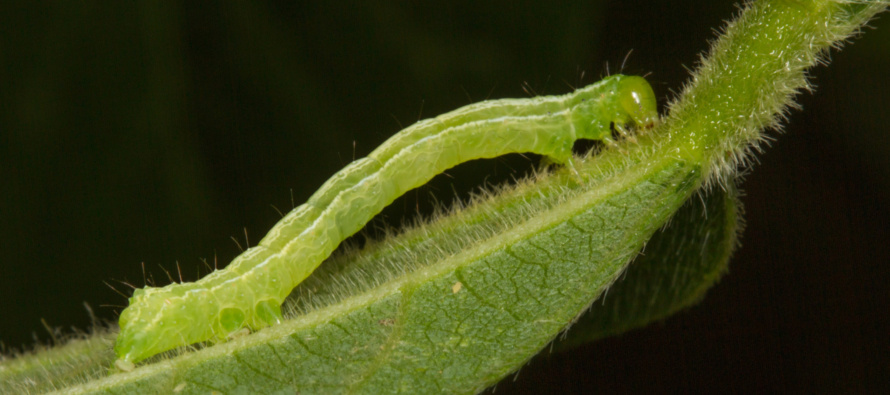Diamide Insecticides and Soybean Looper Management

Related Articles
- 2010 Soybean And Corn Variety Trial Data 3
- Mississippi Cotton Insect Situation of 2010: A Look Back 3
- Rice Insecticidal Seed Treatment Recommendations for Mississippi in 2011 0
Latest Tweets
Since the introduction of the diamide insecticides (Belt, Prevathon, Besiege), soybean loopers have essentially been a non-issue. We all have plenty of data showing 24-35 day residual control of soybean loopers, however, the long residuals are a blessing and curse when it comes to resistance management. Soybean loopers have a long history of developing résistance and are currently resistant to the pyrethroids, carbamates, and organophosphates. Also, remember that soybean loopers do not overwinter here. They migrate their way up through Mississippi typically in August and September from southern latitudes. With that in mind, we don’t create resistance problems with insects like soybean loopers, we inherit it. We know from our recent trip to Brazil that they are experiencing control failures on a number of insects, including soybean loopers, with the diamide chemistries. It is a matter of time before we inherit their problems.
You may recall mid season in 2015, North Carolina State University pulled the diamide chemistries from their recommendations for soybean loopers. This was due to lack of control even at the higher rates. We visit with our counterparts in the southeast regularly and they have been telling us for several years that they just have not seen the level of control that we have experienced in the Mid-south with diamides on soybean loopers. We believe the reason is because their loopers may be originating from Puerto Rico rather than South Texas, Mexico, and possibly even Central and South America like ours. It is well established that Puerto Rico has soybean loopers that are resistant to the diamide chemistries (again, inheriting a problem, not creating it).
Very late in the season of 2015, we got several calls about failures with the diamides in soybeans. Populations were sent to LSU for testing from sweet potatoes in Mississippi and from Arkansas soybeans that were collected by Gus Lorenz, both populations came back very resistant. With soybean loopers really just arriving in the last 10 days, we currently do not know what to expect out of the chemistries at this time. However, we have already, even under low populations, had several reports of leaving low levels in the field after sprays of Besiege, Belt, and Prevathon. Also, I have had several reports of where bollworms were sprayed within the last 7-10 days and loopers were already building behind it. Both of these situations generally describe how we initially see resistance develop (leaving low levels of pest and shortened residuals). **Syngenta is only recommending 10 ounces of Besiege on loopers (this is on their label) although 7 is labeled and works great on bollworm and has provided great looper control in the past when targeting bollworm.
Keep in mind that many have reported very good control so far. We are in no way prepared to say we will experience wide spread control failures on soybean loopers this year but you need to know the stage is set and be prepared to comeback with another class of chemistry if we start seeing failures. Starting next week, we will begin collecting and testing soybean loopers for resistance.
Diamide Alternatives:
First of all, I would never go after soybean loopers with pyrethroids or acephate or the combination of the two. Yes, occasionally they provide marginal control but we have seen NUMEROUS complete failures with all of them and sometimes they even flare them. Its not worth trying. That leaves Intrepid Edge at 4-5 oz per acre (3 oz after R5.5 growth stage only), Intrepid at 4-8 oz, and Steward at 5.6 to 11.3 oz. All of these products still work well on loopers.




Let me tell You a sad story ! There are no comments yet, but You can be first one to comment this article.
Write a comment